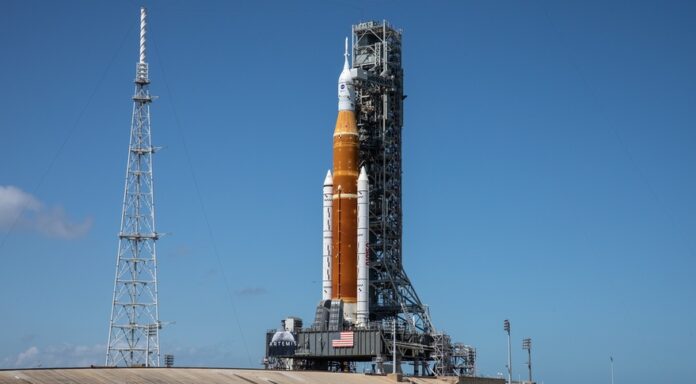Ten years in the making, and almost six years behind schedule, NASA’s Space Launch System (SLS) is about to undergo its first Artemis mission. SLS has cost $23 billion in inflation-adjusted dollars over the decade. Launch costs have seen mission creep from $2 to $4.1 billion. And the program continues to suck up NASA funding beyond the Agency’s carrying capacity, putting science missions in jeopardy. Part of the problem is the type of contracts NASA has been signing with primary suppliers of Artemis.
SLS components include the Boeing-built multi-stage rocket, and other pieces contributed by Lockheed Martin (the Orion spacecraft not including the European Space Agency’s service module contribution), and Northrop-Grumman (the builder of the solid-rocket boosters which were recoverable for the Shuttle Program but will be throwaways for Artemis).
Boeing and Lockheed formed the United Launch Alliance (ULA) a number of years ago to compete for NASA launch contracts. ULA has received the lion-share of NASA money for its launch services when compared to SpaceX which continues to deliver better value per mission. And SpaceX has the Starship and Super Heavy, an alternative to SLS that NASA could use but chooses not to. The consolation prize has been to give SpaceX a contract for a version of the Starship to be used by Artemis for the first lunar landings.
Did NASA need the SLS? Back in 2019, I asked that question in a posting entitled, When will NASA abandon the SLS project? I argued against it for a number of reasons including: that SLS was old technology dressed up to look new, that with the exception of the Orion spacecraft, it was almost all a one-time use throwaway, and that the majority of money being spent was going to administrative overheads, in fact, 72 cents of every dollar according to NASA’s own budgetary audit.
Despite all the evidence of massive overspending and endless delays, NASA has stayed the course and is about to launch Artemis 1, an uncrewed mission to the vicinity of the Moon. This will be the first test on whether the tens of billions invested were worth it or colossal fiduciary malfeasance.
But talk about compounding on the error that produced the SLS, in the latest space news, NASA is prepared to throw even more money at a Boeing company. On July 26, 2022, the Agency issued a pre-solicitation request to sole-source Artemis future launch services going forward to 2036. The number of missions proposed is at least 15.
Since NASA loves to create project acronyms, this is no exception. The new service contract goes by the name EPOC, which stands for Exploration Production and Operations Contract. The likely sole recipient of this future budgetary largesse is Deep Space Transport LLC, a recently formed company with Boeing its premier partner, and Northrop-Grumman, as the junior associate. Since both companies are primary vendors for SLS, NASA justifies sole sourcing based on the infeasibility of involving other companies. In the pre-solicitation NASA explains its rationale stating, “To have another company manufacture the Core Stage and Exploration Upper Stage may take as long as 10 years, a duplicative cost to the Government not expected to be recovered through competition.” Instead, NASA believes that over time production and support costs per mission will go down with the hope that the number will be between $1 to $1.5 billion per launch.
Yet there is competition in plain sight that has proven flight worthy with crewed and supply missions to the International Space Station, and a fully reusable alternative with even greater lift capacity than SLS soon to go through its maiden flight.
The sole-sourced EPOC Artemis service contract is expected to be awarded by the end of next year. If costs remain at $4.1 billion per launch, the contract could deliver anywhere from $65 to $80 billion to Deep Space Transport LLC. But if cost-plus is factored in, as it has been in the SLS Program, the number could be substantially higher. So the boondoggle continues.

















Is it a boondoggle or rape of the American taxpayer?
Hi Brian, It is more of a works program to keep jobs in those states where Boeing and other contractors to NASA have locations. In the current scheme of things, it makes no sense to continue pouring money into these companies that work on cost-plus contracts. There are few penalties for being late, and the government keeps picking up the tab when there are cost overruns. But it gets votes every time.